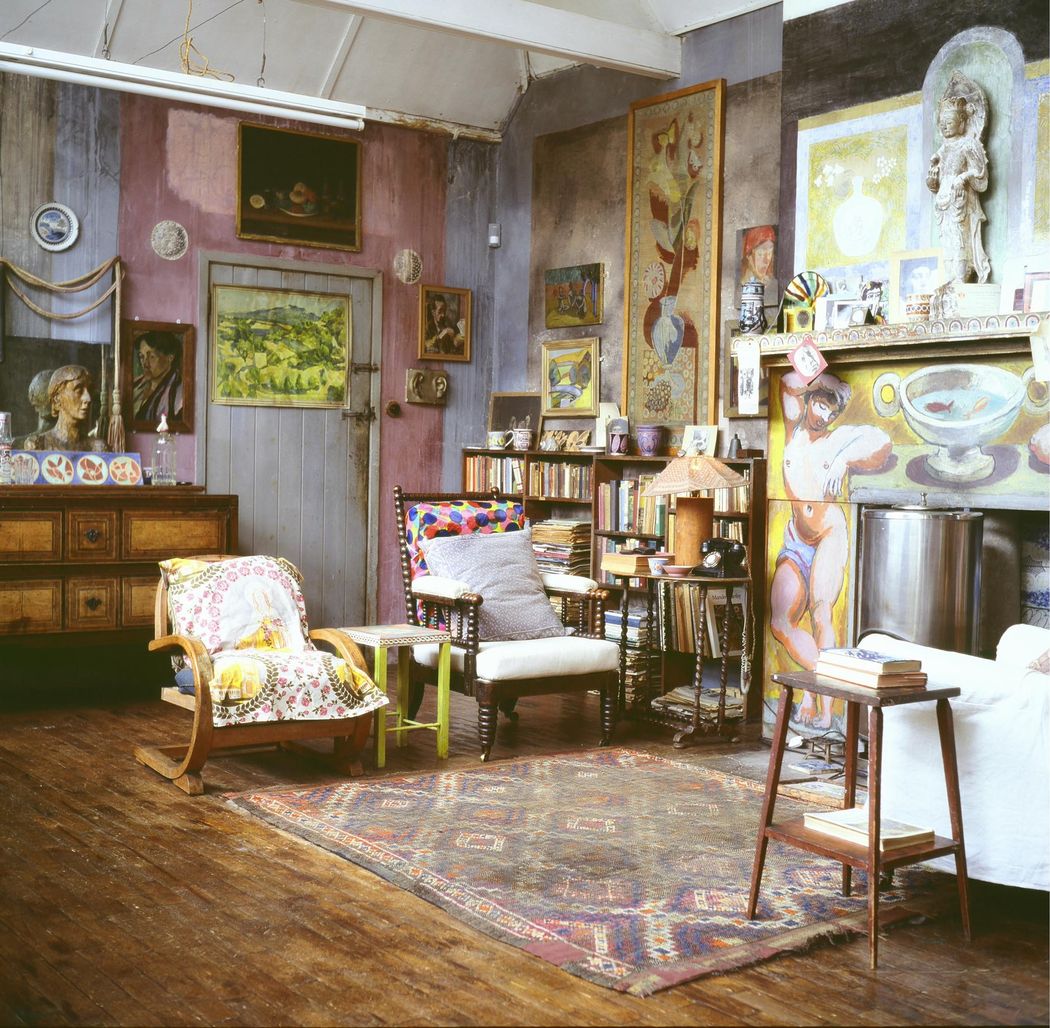Inside the artist's studio
This blog is part of a series responding to the question 'How do you keep the artist's spirit alive in a studio museum?'
Charleston was the former home of the Bloomsbury group artists Vanessa Bell and Duncan Grant, who moved there in October 1916.
From the outside Charleston looks lovely but nothing unusual, an attractive, vernacular building, sitting at the foot of the South Downs. But step through the front door and you will soon see why the place is special, why it was saved, restored and preserved.
The artists decorated the walls, designed textiles, made ceramics, painted furniture, they made art and they lived in art. Charleston became their greatest work of art.
Vanessa Bell died in 1961 and Duncan Grant in 1978. The Charleston Trust was formed a year later to save Charleston which had fallen into a state of extreme disrepair. The walls were damp, the roof leaked, the house was splitting in two.
The Trust raised a million pounds in the early 80s, an extraordinary feat and an example of the support and passion that Charleston commands.

Duncan Grant's studio at Charleston
© Tony Tree
There were six years of restoration, the house finally opening to the public in 1986.
The house was restored to how it looked in the 1950s, a period when all of the key decorative schemes had been completed and when all of the key inhabitants were in residence.
It was also a period well documented in photographs and paintings, and within living memory of many involved.
Thanks to the generosity of Bell and Grant's descendants and friends, most of the contents at Charleston were donated to the Trust, enabling us to show the house in an as authentic way as possible. Fine art, furniture, textiles, ceramics, as well as the ephemera and accumulation of things found in a home.
Over the years key pieces that were bequeathed or sold have been donated or lent to, or purchased by the Trust in an ongoing process of restoring Charleston - of restoring authenticity if you like. Creating an atmosphere where visitors feel that they are in someone's home; that they residents have just left the room.
Right from the off there were concerns about how the house was presented.
There are books and magazines on side tables, all original to the house, there are private view invitations and family photographs on the Studio mantelpiece.
There is some interesting correspondence in the archives of the Trust about what level of homeliness the house should feel like, and a plea from some family members not to fake personal effects, such as hair brushes and dressing gowns casually discarded in the bedrooms, or newspapers and cigarettes in the living rooms.
But there was a universal agreement that it shouldn't feel like a “museum". Once past the threshold, you won't see any signs, and there are no teasels or fir cones on the chairs. The only ropes we have to prevent visitors going into a couple of small rooms are quite tatty bits of braided and tasselled materiel.
When hanging pictures, care is taken to ensure that they are appropriate for the room. The different members of the household had different tastes and different interests. Different relationships are marked.
Vanessa Bell's bedroom is hung with portraits of her children and of Duncan Grant and photographs of her parents.
In Grant's room there are paintings by George Bergen, an American artist with whom he fell in love in the early 1930s, and whose relationship caused jealousy and anxiety for Bell.
Vanessa Bell very kindly made a couple of inventories of the paintings hanging in each room in the 1940s and 50s. There is an attention to detail that goes unnoticed by the visitor but ensures that we portray Charleston and the lives that were lived there as accurately as possible.

Vanessa Bell and Duncan Grant
Most visitors to Charleston are taken around in small groups led by a guide. Each guide has gone through a period of training and has achieved a level of knowledge not only of the subject but also of health and safety, security and accessibility protocols.
They must demonstrate that they are good communicators, able to engage audiences from all backgrounds and levels of knowledge and interest. We have a written tour but the guides are free to develop their own style of presentation, as long as they present the key facts and stories.
Tours last one hour and include 10 rooms, most of the ground floor and the whole of the first floor of the house (the attics house the collection store and the gardener's flat, who also acts as caretaker).
We move paintings around between seasons, we borrow and we loan works, we develop themed tours.
We have one called A Day in the Life of Charleston which follows the day from breakfast, through lunch to dinner and bedtime as the visitor moves through the house. This tour won an award for Interpretation.
But the house is a protected space, it has such a strong sense of place. We try not to disrupt this sense with interventions, things that might jar with the visitor. Reinvention of the space is unnecessary; the narrative is already bursting at the seams without the addition of other voices.
This is out of respect for the artists who created these spaces and for the visitors who come, often again and again to see Charleston, each visit revealing another aspect, another facet of its history.
This blog is part of a series responding to the question 'How do you keep the artist's spirit alive in a studio museum?'